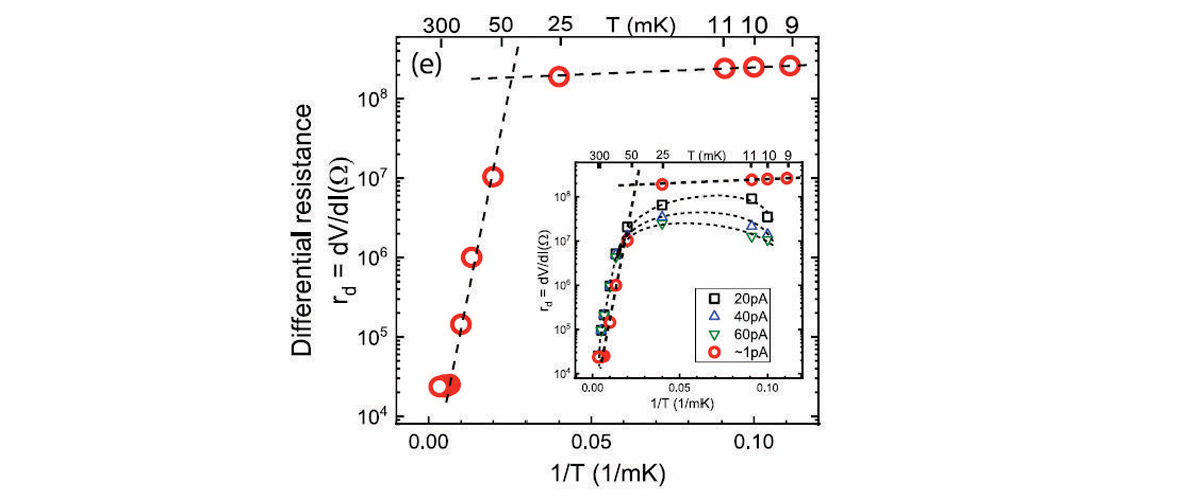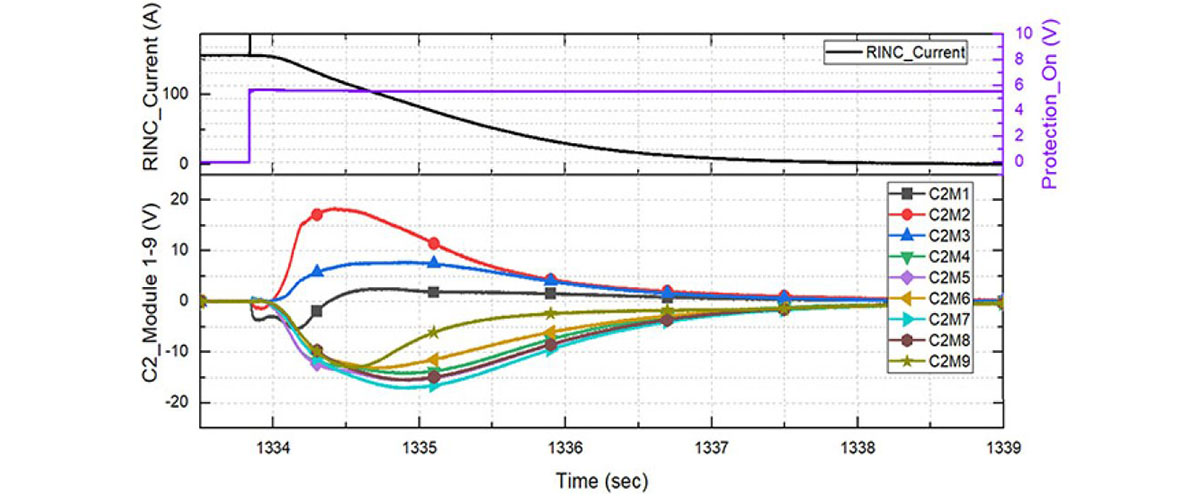What did scientists discover?
Scientists measuring the electrical resistivity of a two-dimensional electron system at ultra-high B/T (magnetic field over temperature) found the first evidence of a clear transition to a Wigner crystal state for the electrons in a high-quality gallium arsenide (GaAs) heterostructure.
Why is this important?
These results reveal a long-predicted quantum ground state arising from strong electron-electron interactions in a nearly ideal, two-dimensional electron system.
Who did the research?
T. Knighton1, Z. Wu1, J. Huang1, A. Serafin2, J.-S. Xia2, K.W. Baldwin3, K.W. West3
1Wayne State University; 2National MagLab and University of Florida; 3Princeton University
Why did they need the MagLab?
Scientists needed two aspects of the High B/T Facility: (1) the access to very low temperatures and high magnetic fields simultaneously, and (2) an ultra-quiet environment for high-sensitivity measurements of the electronic resisitivity.
Details for scientists
- View or download the expert-level Science Highlight, Pinning and melting of a quantum Wigner crystal
- Read the full-length publication, Evidence of two-stage melting of Wigner solids, in Phys Rev B
Funding
This research was funded by the following grants: G.S. Boebinger (NSF DMR-1157490, NSF DMR-1644779); J. Huang (NSF DMR-1410302)
For more information, contact Neil Sullivan.






